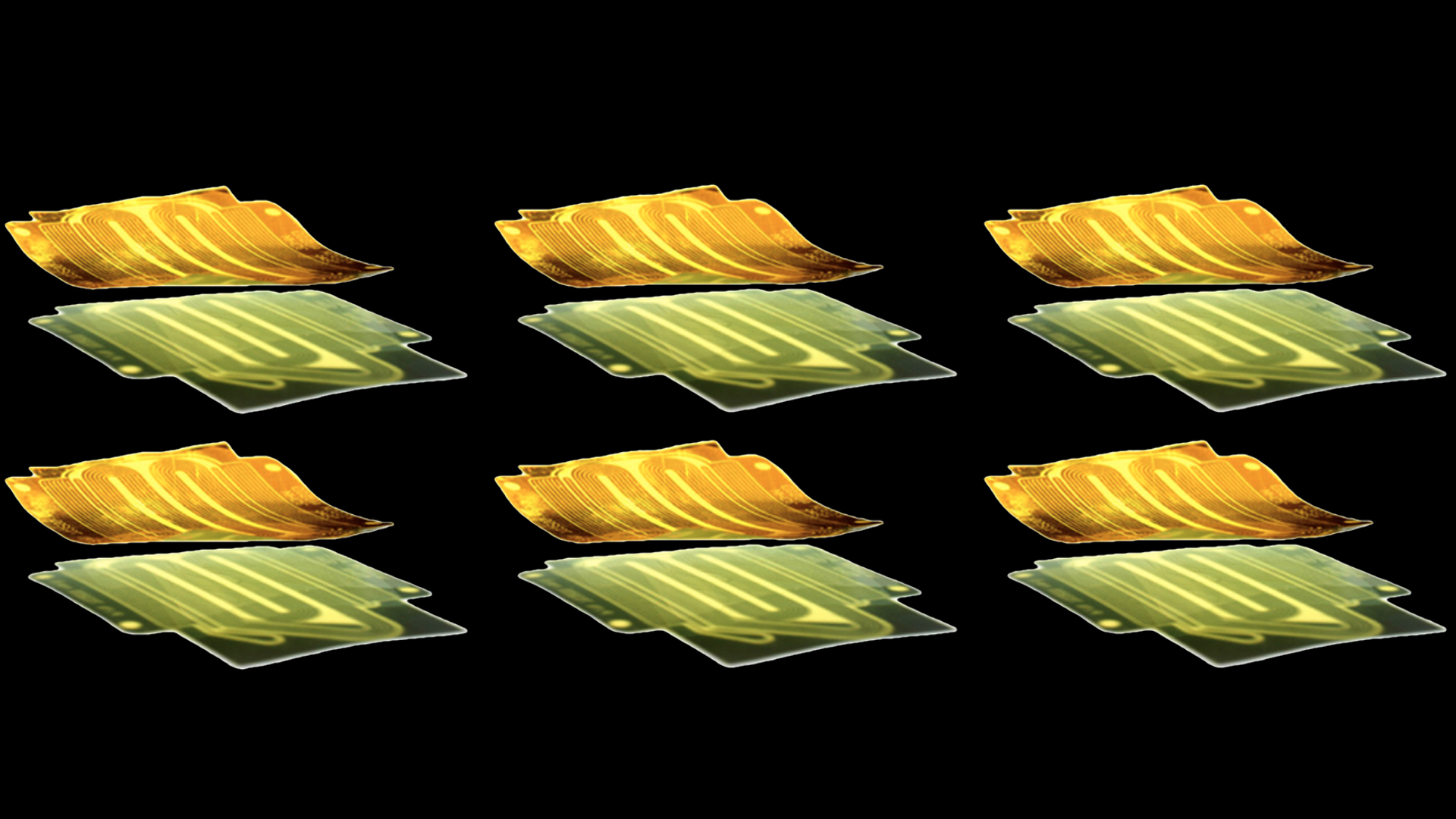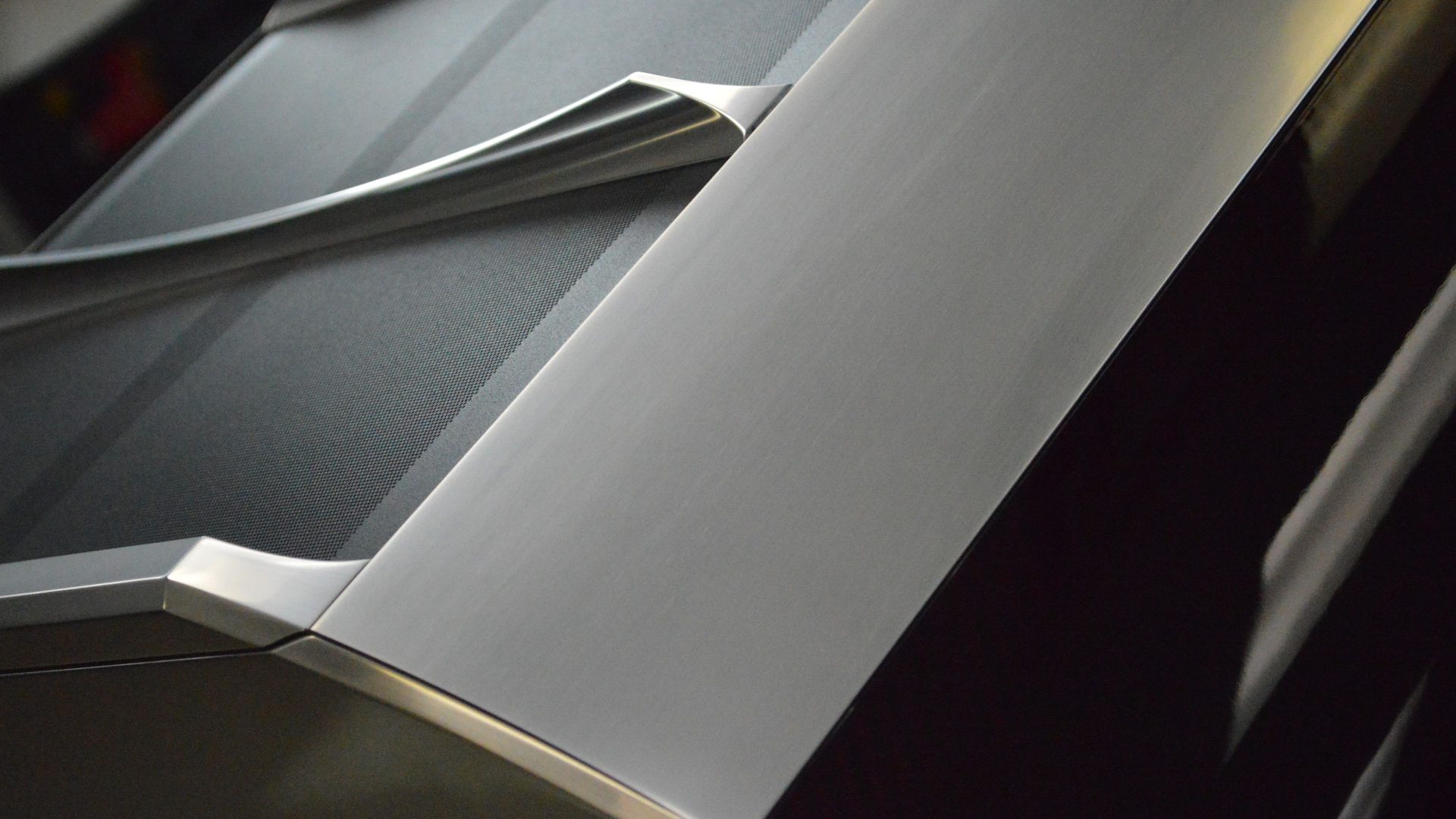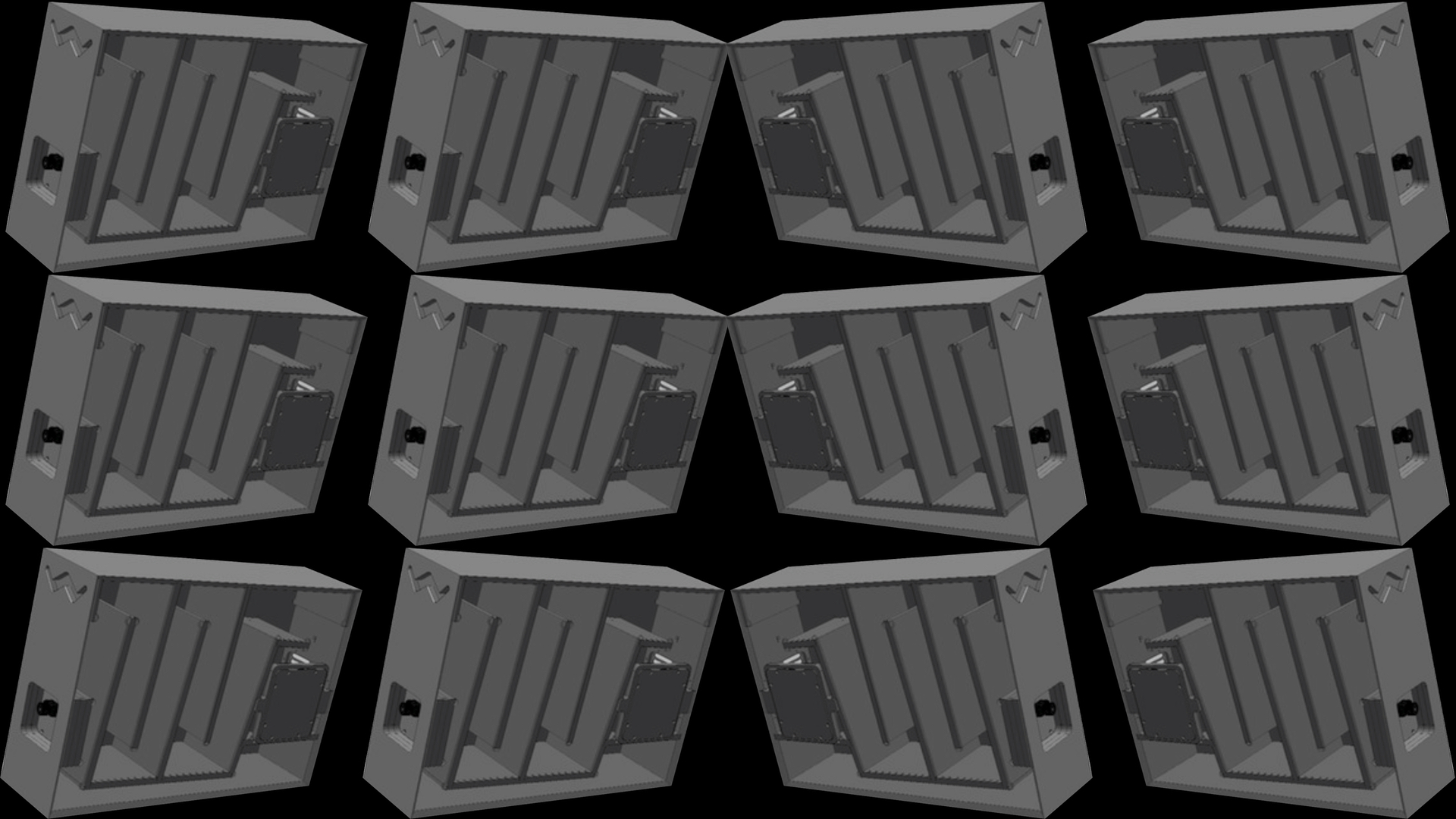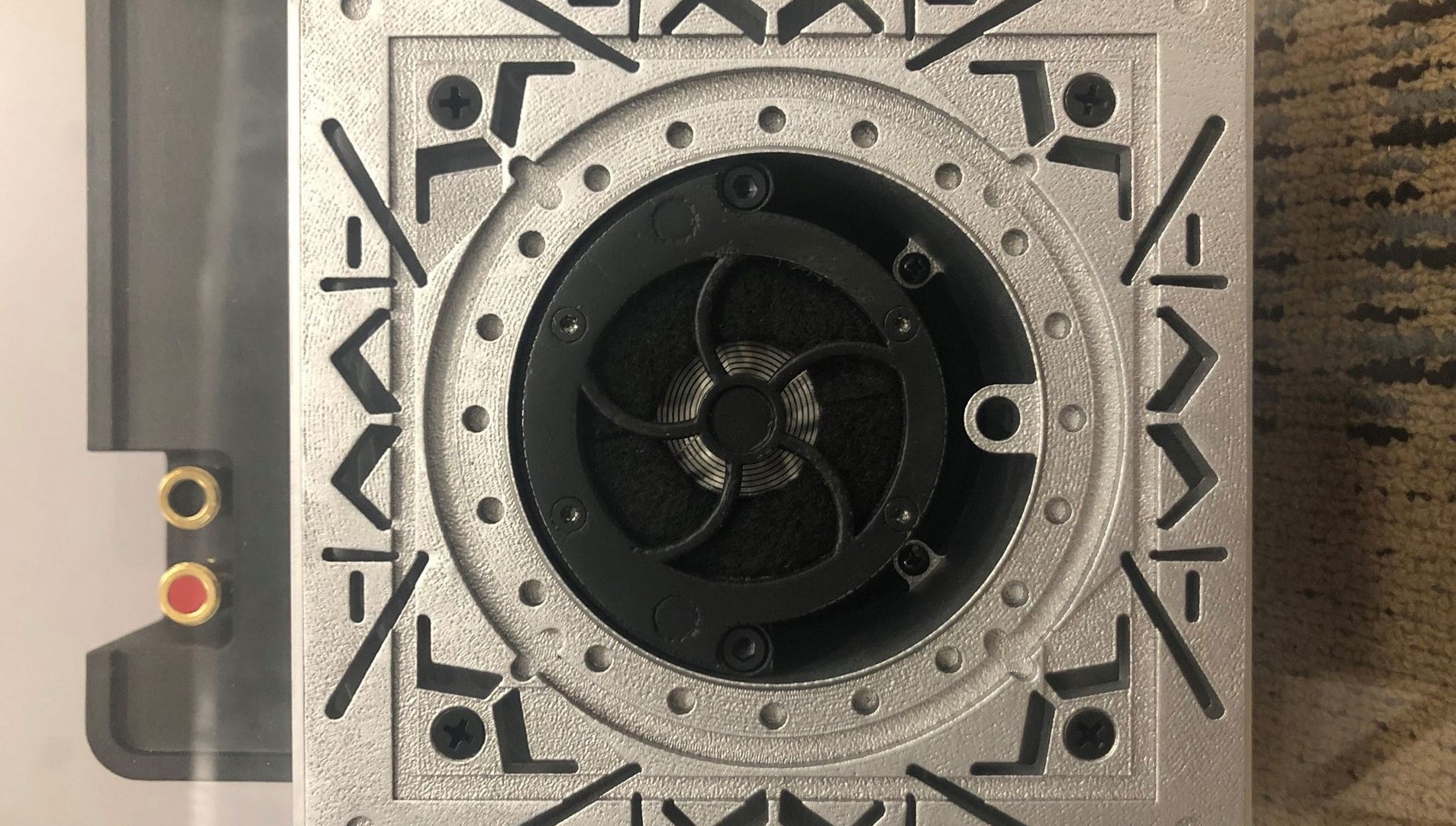
PLANAR MAGNETIC TECHNOLOGY
The Question
There are hundreds of companies building loudspeakers in the world today, yet you can count the number of fundamental driver technologies they are using on one hand. Why is this the case? Are there loudspeaker technologies available that might solve modern-day problems more ably than decades-old “traditional” approaches do?
How Sound Works
The sounds we hear exist as complex vibrations in the air around us. Our ears are tremendously sensitive instruments, capable of distinguishing subtle differences in the spectrum and the timing of those vibrations. We would never mistake the sound of a flute for the sound of a violin, even when they play the same note. This is because each is creating a series of related vibrations rather than a single, pure vibration, and the proportion and timing of these additional frequencies create the distinctive character of a flute, or a violin, or even the difference between a Martin guitar and a Gibson guitar. In fact, everything that vibrates tends to favor certain frequencies over others — this is called resonance — and the particular resonances of musical instruments determine whether they are fine instruments or mediocre ones.
How Speakers Work
A loudspeaker — any loudspeaker — has a significantly different job to do. Ideally, it would reproduce all frequencies equally well, showing no favor whatsoever for one versus another. It would not suffer from inertia, nor be limited in any practical way as to the amount of air it can move. In fact, a list of characteristics of an ideal loudspeaker “driver” (the part that actually moves by design, in response to the signal being supplied) might be as follows:
Fairly Large—to be able to move all that air
Weightless (no mass)—so it could start and stop on a dime, as dictated by the needs of the music
Perfectly Rigid—so that it would not flex, which would distort its motion and thus the resulting sound
Perfectly Non-Resonant—so it would not add its own colorations to the sound
Extremely Sensitive—so your amplifier would not run the risk of running out of power during peak demand
Extremely Rugged—so you would not have to worry about getting rowdy
Capable of Large Excursions—so you could move all that air a lot (for high volumes when rowdy)
Predictable, Uniform Dispersion—so the speakers would sound the same from a wide variety of seating positions, and interact more predictably with the room in which they found themselves
A Simple Impedance—so any amplifier could work well with it, and sound its best
As you can see, imagining anything that has all of these characteristics at the same time is quite challenging. How is something going to be both physically large, and yet virtually weightless? And if you manage that, will it also be rigid enough not to flex and distort the sound? And how rugged would it be when it came time to playing movies or music at realistic volumes?
History of Drivers
The history of driver design is one of trading off one set of desirable characteristics against another, trying to find the best possible compromise. The fact that driver design continues to be so challenging is a testimony to the difficulty of the task itself. The basic technologies used in virtually all loudspeaker drivers today have existed since the 1920s and even earlier. The main improvements have been in execution details (materials technology, better magnets, modern adhesives, and the like) rather than in the fundamentals of what is being attempted.
Why Planar Magnetic Drivers
There are numerous advantages to the use of Planar Magnetic Drivers (PMDs):
Highly Detailed
Planar magnetic drivers are like electrostatic speakers (ESLs) in that the moving mass of the diaphragm is extremely small, lighter even than the air it moves. It can therefore be driven with both delicacy and accuracy, without the blurring effects of excessive inertia.
More Reliable
Planar magnetics have a huge advantage over traditional dynamic drivers, in that the “voice coil” is spread out over a large area rather than squeezed into a narrow gap within a massive chunk of metal. As a result, planar magnetic drivers can dissipate heat effectively that would otherwise build up in a traditional voice coil. Planar magnetic speakers can handle a lot of power without undue stress or audible strain. In fact, for a given surface area, they can handle many times the power of a traditional dynamic driver.
Easy on Amplifiers
Well-designed planar magnetic speakers present an almost perfectly resistive load to the power amplifier in the system since the voice coil is essentially a very long, thin wire. It acts like a simple resistor. This is the easiest possible load for the amplifier to drive, and comparable to the one electronics manufacturers use during measurements designed to show how terrific their products perform. As a result, you can count on your amplifier sounding its best.
Either Dipole or Monopole
The nature of planar magnetic designs makes it relatively easy to design them to either be dipole (radiating equally and in opposite phase in front of and behind the speaker, like ESLs) or monopole (radiating only in the forward direction, more like a traditional dynamic speaker). This presents some interesting possibilities for on-wall or even in-wall designs that could combine exceptionally high performance with relatively little impact on a domestic environment.
Our Planar Magnetic Drivers
While it is impossible to claim that any speaker is perfect, some do get significantly closer than others and Wisdom Audio leads the way. Here’s how:
Neodymium magnets
Wisdom Audio planar magnetic drivers use costly “rare earth” or neodymium magnets, which provide a vastly stronger magnetic field than conventional magnets while using fewer and smaller ones. This vital difference yields several critical improvements over what was possible only a few years ago:
High Sensitivity—The higher field strength of these remarkable magnets means that your amplifier does not have to work nearly as hard to deliver a satisfactory listening experience.
Plays Louder and Lower—Since the magnetic field is so much stronger, it becomes possible to open up the space between the front and rear magnet arrays, giving the diaphragm more room to move. Since it can move further, it can move more air for its size and therefore play both more loudly and lower in frequency than a comparably sized ESL panel, or older-style planar magnetics. (In fact, an ESL panel must be between ten and twenty times larger than the equivalent Wisdom Audio planar magnetic to achieve comparable performance.)
Tighter Control—Since the force acting on the lightweight diaphragm is so high and spread uniformly over its surface, the motion of the diaphragm is strictly controlled. Advanced methods of diaphragm resonance suppression dampened out the motion of the undriven portions of the diaphragm (near the edges). Spurious motion due to inertia or resonances is vanishingly small as compared to traditional dynamic designs and on par with the best ESLs.
Reduced Coloration—The arrays of older, bulkier bar magnets got in the way of the sound that the diaphragm was creating, coloring the sound that was otherwise so detailed and remarkable. Since the neodymium magnets are a fraction of the size, there is dramatically more open space on either side of the diaphragm and the colorations disappear. In particular, the magnets in front of the diaphragm are extremely slim and offer virtually no interference with sound.
Controlled Directivity—When you can make a diaphragm in virtually any shape and still have its entire active surface operating as one (in phase), it becomes possible to design drivers with extremely specific dispersion patterns that have direct performance benefits. For example, musical detail and dialog intelligibility are both enhanced if you can minimize spurious reflections in your listening room. With a tall and narrow design, you can provide wide dispersion to support a generous seating area, while minimizing the energy bouncing off ceilings and floors. In short, you hear more of the speaker and less of your room.
Advanced Thin Film
Wisdom Audio is one of the first companies to abandon PET (Mylar™) in favor of more advanced materials that have superior dynamic and temperature characteristics. Of these, the polyimide family of polymers is the most promising, some of which can handle temperatures over 725°F (385°C) — far over what even the most advanced adhesives could hope to withstand. Fortunately, this is also a temperature range unlikely to be experienced by any planar magnetic driver, except perhaps in the most demanding professional applications.
Note that larger planar magnetic drivers are never subjected to such a high power/area ratio, and their larger surface area also creates higher sound pressure levels with ease. Thus the added cost of the adhesive-free approach is neither necessary nor warranted in larger drivers.
Pleated Diaphragms
Wisdom Audio thin film diaphragms are pleated using a proprietary, high-pressure process that enhances the thermodynamic stability of the diaphragm while increasing its overall excursion capability. Sensitivity is improved while standing waves on the surface of the diaphragm are all but eliminated. As a result, these planar magnetic drivers manage to best even other strong planar magnetic designs in terms of both detail and dynamics.
The difference is not subtle. Compare these speakers to any other high-performance design: dynamic, ESL, ribbon, or planar magnetic, and you will hear the music come alive in a way that speaks directly to your emotions. They are incredibly engaging. They must be heard to be appreciated.
The Answer
Planar magnetic driver technology offers significant benefits over traditional dynamic driver technologies, especially at all frequencies above the bass (where dynamic drivers still tend to make the most sense). PMDs provide superior detail, outstanding dynamic range, and controlled directivity as compared to alternative technologies, all of which add up to create a more consistent and realistic level of performance in your home.
All of our Insight and Sage Series Point Source Speakers all use Planar Magnetic Drivers that play from around 650Hz to 20kHz – Covering 5 Octaves
All of our Insight and Sage Series Line Source Speakers all use Planar Magnetic Drivers that play from around 350Hz to 20kHz – Covering 6 Octaves
All of our Wisdom Series Line Source Speakers all use Planar Magnetic Drivers that play from around 80Hz to 20kHz – Covering 8 Octaves

Wisdom Audio is a leader in the development of PMD technology, pushing it to new heights of performance while addressing some of the inherent limitations of planar magnetic designs. The many patented innovations seen in Wisdom Audio products are a testimony to both the experience and the creativity of those involved. If you have not yet auditioned a Wisdom Audio system, we strongly encourage you to do so.


